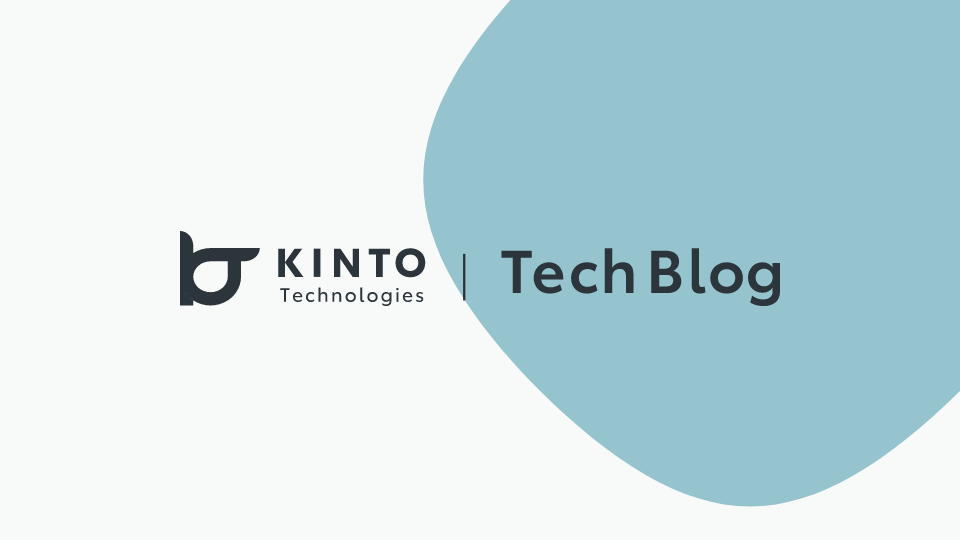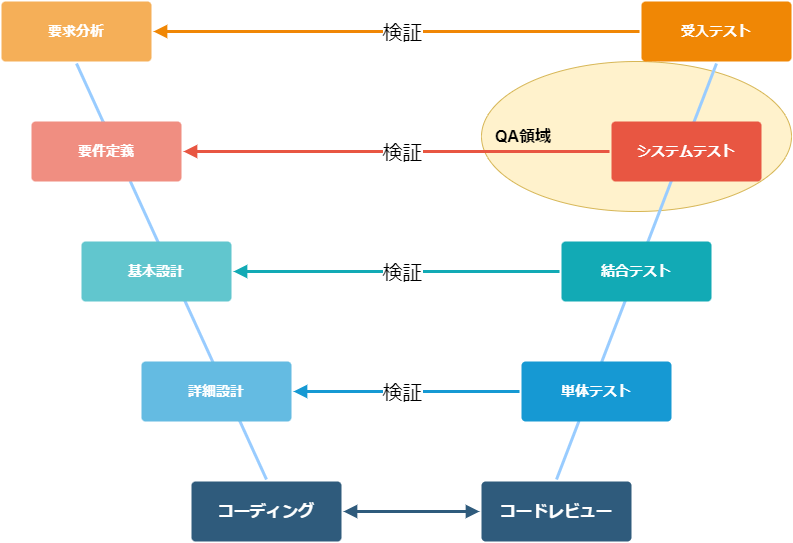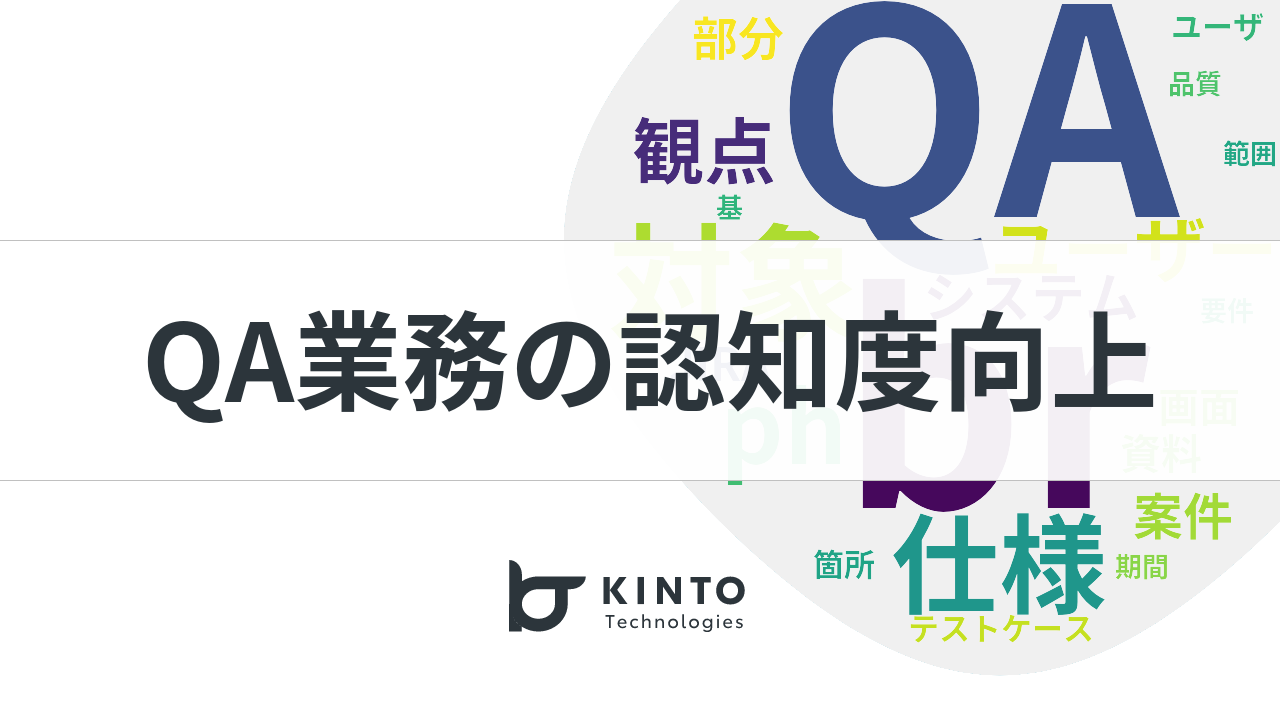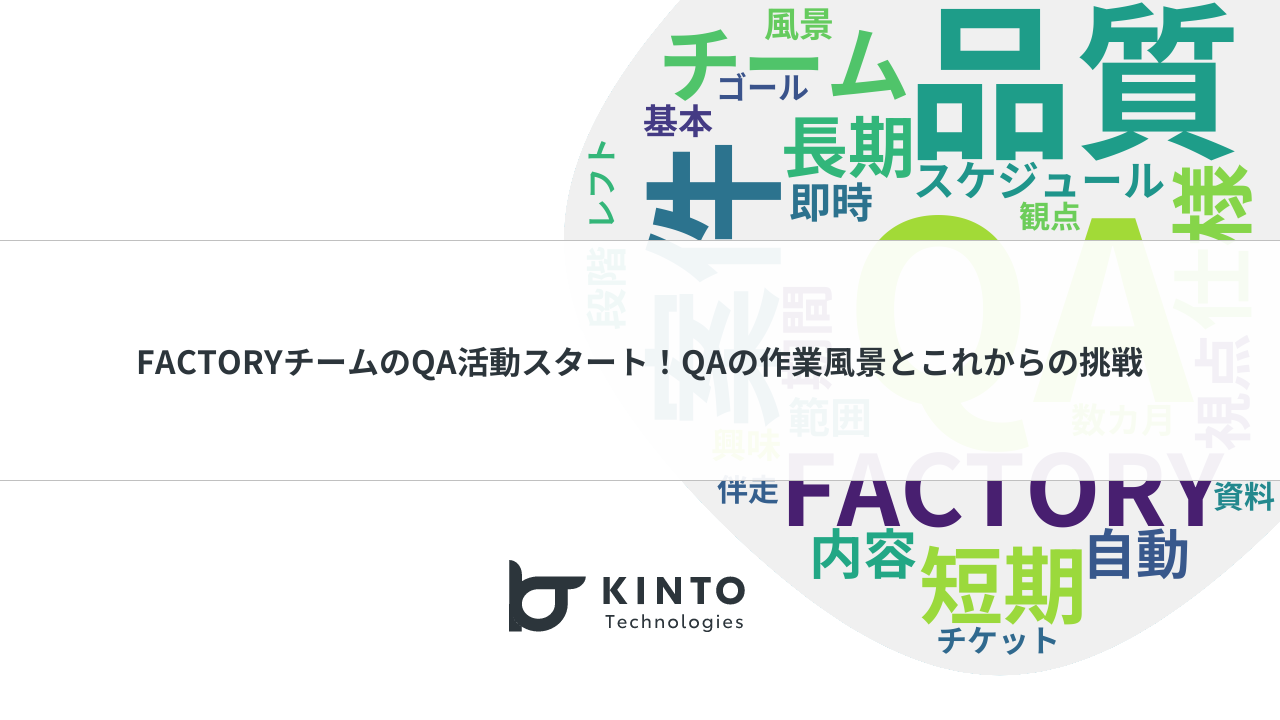Quality Assurance (QA) Group Introduction

Introduction
My name is Zume and I am the Quality Assurance (QA) Group Manager at KINTO Technologies. I'm a lifelong cat lover. Cats truly make everything better. There’s something special about their pure, honest nature.
In this article, I’d like to introduce the role and responsibilities of our QA Group.
About the QA Group
The QA Group is primarily responsible for pre-release verification of various services at KINTO Technologies. Our mission is to improve the overall quality of the products we provide and take the lead in QA initiatives.
Current Activities
Until recently, our QA efforts mainly focused on domestic products like KINTO ONE (New Vehicle and Used Vehicle). However, KINTO Technologies also has a global development group, so we are now also involved in overseas product projects. We also offer an app called Warikan KINTO, which is developed in collaboration with a Swedish company. As a result, our QA communication for this project is conducted in English.
In terms of the development process, our QA work corresponds to the system testing phase, which is paired with requirements definition in the V-shaped model.

Our QA testing generally includes the following:
- Verifying that functions and performance meet requirements.
- Identifying and eliminating bugs and risks.
- Confirming that the product meets the release quality standards.
At KINTO Technologies, User Acceptance Testing (UAT) is carried out by the business side,
QA work involves a series of processes, from test planning, design, implementation, reporting defects, to checking modifications, and reporting release decisions after testing is complete. Depending on the project, QA does not only participate after development is complete, but rather participates from the requirements definition phase. The aim is to understand both business and system requirements at an early stage. The QA Group is also the only division that has the unique ability to perform cross-functional testing across different systems. Therefore, from our QA perspective, we aim to raise any concerns in advance so that we can resolve them at the earliest stage.
After each release, we hold internal retrospectives, and participate in overall project reviews where we identify trends in defects and propose improvements. These efforts help ensure smoother progress in future projects.
If you’re interested in an overview of our QA work, our team member okapi has written another article, so I’d appreciate it if you took a look as well!
Group Members, Atmosphere, and Work Style
There are currently nine members in the QA Group, including myself. As our team becomes more international, English proficiency is becoming increasingly valuable. While not strictly required, the ability to communicate in English can open up additional opportunities. Each of us has our own areas of expertise, such as apps or web, but we structure the team so that everyone can handle any product as needed. Our members vary in age, and the gender ratio is roughly 50/50. We don’t rely solely on Slack or Zoom. In fact, we often come to the office and talk face-to-face more than online.
We also keep a dedicated Zoom room open all day, so whether you’re working remotely or in the office, there’s always someone you can talk to. Since we work with external partner companies, we frequently use Zoom breakout rooms for meetings.
To keep the communication flowing smoothly within the team, we hold morning meetings at the start of the day, an evening wrap-up meeting, and a weekly team meeting. While some members work from home depending on the day, most meetings are held via Zoom. However, our weekly team meetings are usually held in person.
We also hold study sessions from time to time to help improve team members’ skills. These are not regular events, but we organize them as needed. For now, the main focus is on deepening our understanding of services and system specifications. In the field of testing, the Foundation Level certification defined by ISTQB is generally considered a basic qualification. However, we do not require it as long as you have equivalent experience and skills. In fact, having a certificate alone is not enough. What really matters is how well you can apply that knowledge in practice. That’s why we place greater value on hands-on QA experience, such as the types of projects you’ve worked on and the specific roles you played, as well as your practical skills. This applies to engineers in general, and QA engineers are no exception. Strong problem-solving skills are essential.
Future Outlook
In our QA Group, we have been working on test automation for some time now. Currently, automation is limited to certain areas and only covers the web, but in the future we would like to expand it to the mobile (native apps) area as well. We hope to share more about the tools we use, and those we’re considering, in a future post.
Since everything we work on is car-related, if you enjoy cars, whether driving or just looking at them you'll likely find it even more enjoyable. Personally, I’ve been driving and owning cars for quite a long time, and I still enjoy learning new things and making unexpected discoveries every day.
The QA Group also plays the role of the final checkpoint to ensure product quality before it reaches our customers. At the same time, we’re also the team that gets to experience new services before anyone else. If you find that rewarding and interesting, we would love for you to join us.
関連記事 | Related Posts
We are hiring!
【QAエンジニア(リーダークラス)】QAG/東京・大阪・福岡
QAグループについて QAグループでは、自社サービスである『KINTO』サービスサイトをはじめ、提供する各種サービスにおいて、リリース前の品質保証、およびサービス品質の向上に向けたQA業務を行なっております。QAグループはまだ成⾧途中の組織ですが、テスト管理ツールの導入や自動化の一部導入など、QAプロセスの最適化に向けて、積極的な取り組みを行っています。
【フロントエンドエンジニア(リードクラス)】FACTORY EC開発G/東京・大阪
TOYOTA UPGRADE FACTORY / LEXUS UPGRADE FACTORYについて自動車のソフトウェア、ハードウェア両面でのアップグレードを行う新サービスです。



